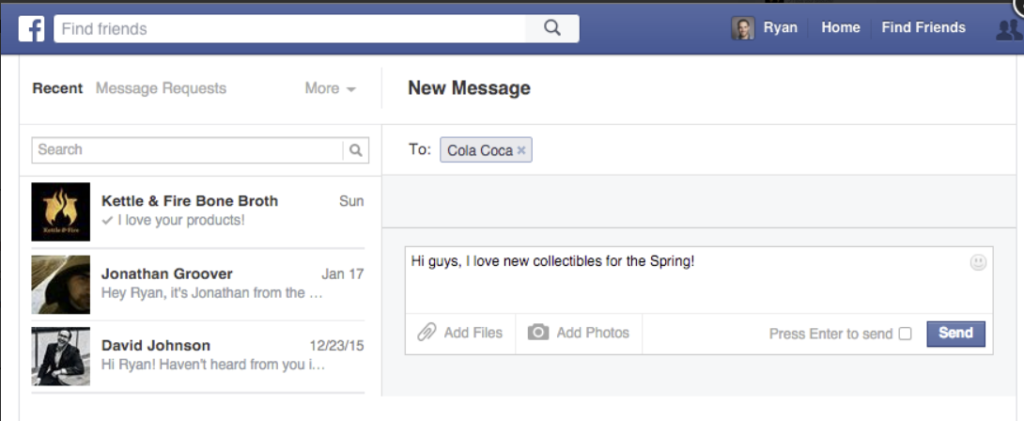Shopify has become the largest out-the-box ecommerce platform in the world. With more features than you can shake a stick at, it’s arguably the easiest and most compatible tool for ecommerce businesses.
What I love most about Shopify is its ability to integrate with Facebook, there are a number of ways you can achieve this at every level of your sales funnel, and today I’m going to walk you through them.
1. Facebook Ads
There isn’t a single ad objective you cannot run with a Shopify store. With the relative ease of being able to create individual product and category pages, you can set up hundreds of custom audiences to pixel prospects and serve them media they have shown interest in.
You can do everything from setup dynamic product ads (discussed later), custom conversions to lead ads through the Shopify platform.
While you can do this on most other ecommerce platforms too, Shopify has a number of built in apps that allow you to D.I.Y over hiring website designers.
- Ideal integration for: marketing
2. Setup a store on your Facebook Page
Shopify has a Facebook App that allows you to sell products on Facebook for free. By downloading the Facebook Store app, you can sell products and take payment without customers having to leave Facebook.
Here’s an example of one ecommerce store that uses the plugin to sell their high-end products:

If a product is sold in USD, the user can buy directly from Facebook otherwise they are sent to a landing page on Shopify where they are asked to fill out their payment details.
- Ideal integration for: driving sales
3. Customer service channel
Facebook Messenger from GDS is the latest way brands are connecting with their customers.
Why use Facebook messenger over email? Because unlike emails which can end up in the junk folder or be deleted by customers before they are even read, 95% of all Facebook messages are opened by the recipient.

Facebook Messenger from GDS offers a 7-day free trial and is priced at $7.99 per month thereafter. Other chap apps include Embedded Chat Facebook Widget and Quick Facebook Live Chat.
- Ideal integration for: Customer service support
4. Dynamic Product Ads
If you’re new to dynamic product ads you must read an earlier post about them here. In a nutshell, they are an ad objective that shows prospects items from your Shopify store dynamically based on previous actions made at your store.
For example, let’s say you sell furniture and a prospect viewed a specific bed. By leveraging dynamic product ads you can create an ad of the same bed they viewed and similar products they may be interested in by using automation.
You can setup dynamic product ads by reading the article above, or you can download Shopify apps such as Facebook Dynamic Product tools or Facebook Dynamic Product Ads By Sokrati to smoothen the process for you.
- Ideal integration for: Marketing automation
5. Persistent Cart
Over $4 trillion is lost every year in cart abandonment sales online:

(Source)
One of the biggest problems ecommerce brands face today are users who access the Internet on a number of devices. Pretty much everyone has a mobile smartphone and either a tablet device or computer.
If a prospect is viewing your store on their mobile device, adds a few items to their cart and receives a phone call or finishes their lunch break before checking out, they will lose everything in their cart if they later visit your store from a new device.
Persistent Cart automatically ties in user’s Facebook ID with their shopping cart. If they login from one device to another their cart will still be saved.
Another option to minimize card abandonment is Abandonment Guard which offers you the chance to email customers who placed items in their cart but didn’t checkout.
- Ideal integration for: Optimizing conversions
6. Facebook login
Do you know what stops prospects from shopping at your ecommerce store? Having to fill in a registration form, as many as 86% users saying they feel frustrated when asked to do so.
EasyAuth Social Login solves this problem by letting your customers create an account with a single click using Facebook. EasyAuth Social Login supports one-click registration for:
- Yahoo
- Windows
The app also lets you find which of your customers are using which platforms allowing you to better plan your marketing spend going forward. By asking them to create an account with their Facebook Page ensures they fall into your website custom audiences for future ad targeting.
- Ideal integration for: user experience
Facebook is the future, future proof your Shopify Store Today
Whether you’re a fan of Facebook or not, it’s become the second biggest platform in the world (after Google) and will be a huge part of any ecommerce business revenue stream.
The amount of ways you can integrate your store with Facebook are endless and to get ahead you’ll have to use most of them. For example, tools like Coupler.io can help with integration.
Do you have a Shopify store but haven’t integrated it with Facebook yet? Get in touch with us today to learn how.